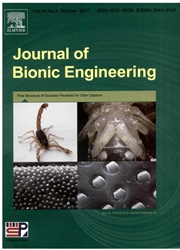

 中文摘要:
中文摘要:
A new method for simulating the folding pathway of RNA secondary structure using the modified ant colony algorithmis proposed.For a given RNA sequence,the set of all possible stems is obtained and the energy of each stem iscalculated and stored at the initial stage.Furthermore,a more realistic formula is used to compute the energy ofmulti-branch loop in the following iteration.Then a folding pathway is simulated,including such processes as constructionof the heuristic information,the rule of initializing the pheromone,the mechanism of choosing the initial andnext stem and the strategy of updating the pheromone between two different stems.Finally by testing RNA sequences withknown secondary structures from the public databases,we analyze the experimental data to select appropriate values forparameters.The measure indexes show that our procedure is more consistent with phylogenetically proven structures thansoftware RNAstructure sometimes and more effective than the standard Genetic Algorithm.
 英文摘要:
英文摘要:
A new method for simulating the folding pathway of RNA secondary structure using the modified ant colony algorithmis proposed.For a given RNA sequence,the set of all possible stems is obtained and the energy of each stem iscalculated and stored at the initial stage.Furthermore,a more realistic formula is used to compute the energy ofmulti-branch loop in the following iteration.Then a folding pathway is simulated,including such processes as constructionof the heuristic information,the rule of initializing the pheromone,the mechanism of choosing the initial andnext stem and the strategy of updating the pheromone between two different stems.Finally by testing RNA sequences withknown secondary structures from the public databases,we analyze the experimental data to select appropriate values forparameters.The measure indexes show that our procedure is more consistent with phylogenetically proven structures thansoftware RNAstructure sometimes and more effective than the standard Genetic Algorithm.
 同期刊论文项目
同期刊论文项目
 同项目期刊论文
同项目期刊论文
 期刊信息
期刊信息
